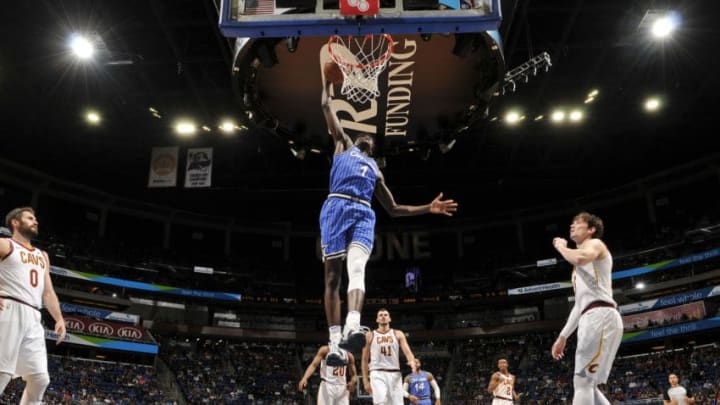
What To Watch For
The Florida State Seminoles product completed his sophomore campaign by compiling averages of 9.6 points, 5.5 rebounds, and 2.1 combined steals and blocks per game on 42.9 percent field goal percentage, 32.3 percent 3-point percentage and 81.5 percent free throw percentage.
Those numbers do not exactly send shockwaves through the NBA. Looking closer, though, should give Magic fans some hope.
Jonathan Isaac injured his ankle during the eighth game of the season and missed the following six games. A lengthy, cautious recovery process followed before coach Steve Clifford gave Jonathan Isaac a full complement of minutes and opportunities. With Isaac’s injury history and important place in the Magic’s hopes, that approach was understandable.
By late January, Isaac the Athlete seemed to be fully back. But someone on the Magic coaching staff or Isaac himself figured something else out.
It was around then the team saw a big shift in Isaac’s numbers and how Isaac was used offensively.
In games before Feb. 1, the vast majority of Isaac’s field goal attempts were 2-pointers (61.6 percent). From Feb. 1 on, he was split nearly evenly in his 2-point and 3-point attempts. He would catch and shoot at a much higher clip and 3-pointers took up a much larger chunk of those attempts than earlier in the season.
This shift was noticeable when comparing it in the context of the rest of the league. Out of 119 players averaging at least 28 minutes a game, from Feb. 1 on, Isaac was 29th in terms of the highest percentage of his points coming from beyond the arc. Before February 1, out of the 169 players averaging at least 25 minutes a game like Isaac did, he was 101st.
Defensively, it also seemed to be a tale of two seasons.
Beginning Feb. 1, the Magic posted a 104.2 defensive rating with Isaac on the floor, good for 11th in the league for players averaging a minimum of 28 minutes per game. Before that, he did not even crack the top 100 for players averaging at least as many minutes as him, with the team posting a defensive rating of 109.4 with Isaac on the floor.
Much of this disparity could conceivably be chalked up to his health. Isaac and Clifford also discussed Isaac’s regained confidence as providing him a spark around the time of his productivity boost.
In the Playoffs, Isaac showed both good and bad flashes. He showed his potential as a defender and spot-up shooter at times, but he looked lost (read: like a rookie) at other points.
Looking at the big picture of his season, the numbers certainly do not wow anyone, but Isaac gave Magic fans reasons for optimism.
After Feb. 1, he bumped his averages to 11.8 points per game, 2.4 combined steals/blocks, and 5.9 rebounds per game on 45.3 percent shooting, 36.7 percent from beyond the arc and 76.0 percent from the foul line.
Considering how spastic his history in the NBA had been up to that point due to injuries and organizational changes, Isaac closed his season on a strong, positive note.
